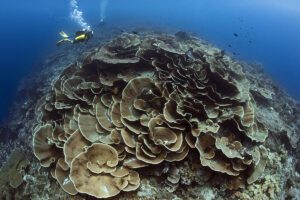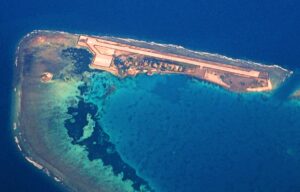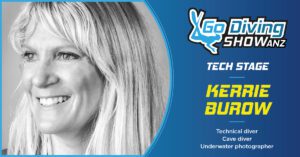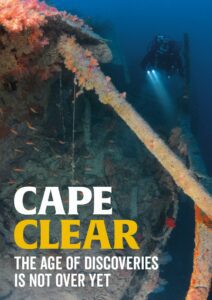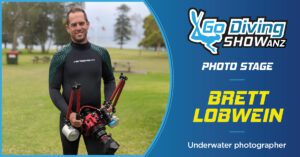How did you get started in underwater photography?

I took my first photos underwater in the sea when I was a kid. They weren’t very good. Fortunately, they have improved down the years. I first trained and worked as a marine biologist, but 15 years ago left that career and became a full time underwater photographer. This has enabled me to photograph in the ocean and freshwater all over the world. My book Underwater Photography Masterclass is widely considered essential reading for anyone wanting to get into this type of photography.
I have been fortunate to be awarded in many major photography contests and my photos have been featured in 10 different books of winners from the Wildlife Photographer of the Year. A few years ago I started the Underwater Photographer of the Year competition. In 2003 I received the Visions In The Sea award for Outstanding Contribution to Underwater Photography and in 2016 the ADEX award for “Extraordinary Contribution to Underwater Photography”. In June 2018, I was made an MBE for services to underwater photography in the Queen’s Birthday Honours.
What came first – diving or photography?

Photography. Well, underwater photography. I had my first (basic) underwater camera when I was nine years old and a high quality Nikonos V when I was 15. I didn’t have a dedicated land camera until I was nearly 20! I was a very keen snorkeler before I began diving. In fact I am still a keen snorkeler – I have done two snorkel only trips already this year. Anyway, I first tried scuba in the pool when I was 13, in the sea when I was 14, and was certified at 15. I still keep a dive log and have made 4,137 dives and have progressed to PADI Advanced Open Water certification!
What’s in your underwater photography kitbag?

Too much to carry! My main cameras are Nikon SLRs. I am shooting with a Nikon D5 and Nikon D850 at the moment. I also use an Olympus OM-D EM-10 Mark III mirrorless camera. The Nikons are in Subal housings, the Olympus is in a Nauticam housing.
My main strobes are Seacam 150s and Retra 100s, but I also have Inon, Subtronic and Nikonos strobes. I have lots of lenses – although fisheyes are my favourite. I have recently been doing lots of work with water corrected lenses, such as the Nikonos 13mm fisheye and helping Nauticam develop their WACP system. This is an exciting technological frontier for underwater photography.
I do lots of development testing for underwater photography manufacturers and also regularly write reviews on new products. This means I have lots of accessories and also usually have some interesting prototypes knocking around (that I can’t speak about yet)!
Favourite location for diving and underwater photography?

I love the diversity of the underwater world. I challenge myself to be able to master all branches of underwater photography. Cold water, warm water, good vis, bad vis, big animals, super macro, people photography, wrecks and more. And I enjoy all of them. In the last few months I have photographed everything from pygmy seahorses to blue whales and enjoyed them all. It is wreck photography in the Red Sea next.
Most challenging dive?

I have had a lot of memorable experiences underwater. I have dived in the hot water of an active volcano and dived on a hydrothermal chimney where the seawater was 2˚C, but the vent was more than 80˚C. I have been underwater during an earthquake – deafeningly loud but not that much shaking – and been caught in a category five hurricane. I have photographed great white sharks and tiger sharks regularly, but my most dangerous encounter with marine life was meeting a very amorous bottlenose dolphin.
I think the toughest diving I have done was in North Iceland in winter to photograph spawning aggregations of cod. The guide told me that last time he did it his video camera could not focus because of all the ice crystals in the water…
Who are your diving inspirations?

I have always been a dedicated student of underwater photography and continue to get inspiration from so many different photographers. I mention many of the big names I greatly admire throughout my book Underwater Photography Masterclass. But I regularly get inspiration from less well known photographers too. Standards in underwater photography are always improving and it is usually the guys and girls who don’t have a big name yet that are often doing the most innovative work. It pays to watch what they are doing.
Which underwater locations or species are still on your photography wish list?

Destination and subject wish lists seem to grow the more you dive, rather than shrink. I try and always have been most excited about what I am photographing next, rather than dreaming too far ahead. I think photographers shoot better when they are passionate about what they are shooting. I am just back from Lembeh and am off to the Red Sea soon – so I am really excited to get back to those clear blue waters, world class shipwrecks and vibrantly coloured reefs. I also really like to repeat dive sites and destinations. I think you produce more interesting work when you photograph the same subject more than once.
What advice do you wish you’d had as a novice underwater photographer?

To be honest I would have loved my own book because I put into that everything I think it is important to know. The most important thing when starting out is to work on your diving skills – being stable, competent and confident in the water will help your images as well as help protect the delicate environments that we photograph in. A camera can be a terrible distraction underwater, so don’t take one in until you are really ready.
Hairiest moment when shooting underwater?

That would be my encounter with a dolphin who was in love with me (the video has 1.5 million views on Youtube – but fortunately my friend kept my surname off it!). Also, I was shooting macro close ups on that dive so I didn’t even get any photos of the dolphin myself. That’s the worst thing as a photographer – being the middle of something extraordinary and not being able to record it. What a missed opportunity!
What is your most memorable dive and why?

From this summer it would be shooting marine iguanas in Galapagos. Totally unlike anything else I have photographed underwater. They are mini godzillas, so single minded when they dive down and feed on the algae growing underwater. They’re definitely on a mission!

Dr Alexander Mustard, 43, from the UK is widely regarded as one of the world’s leading underwater photographers. He has been taking photographs underwater since he was nine years old and has worked as a full time underwater photographer since 2004. His photographs have won many awards including regularly in the BBC Wildlife Photographer of the Year – appearing in 10 different books of winning pictures. He is a four-time category winner in the British Wildlife Photography Awards amongst many others. His photographs have been displayed in exhibitions around the world and a particular highlight was personally presenting his work to Queen Elizabeth II.
Read more about Alex on his website www.amustard.com


